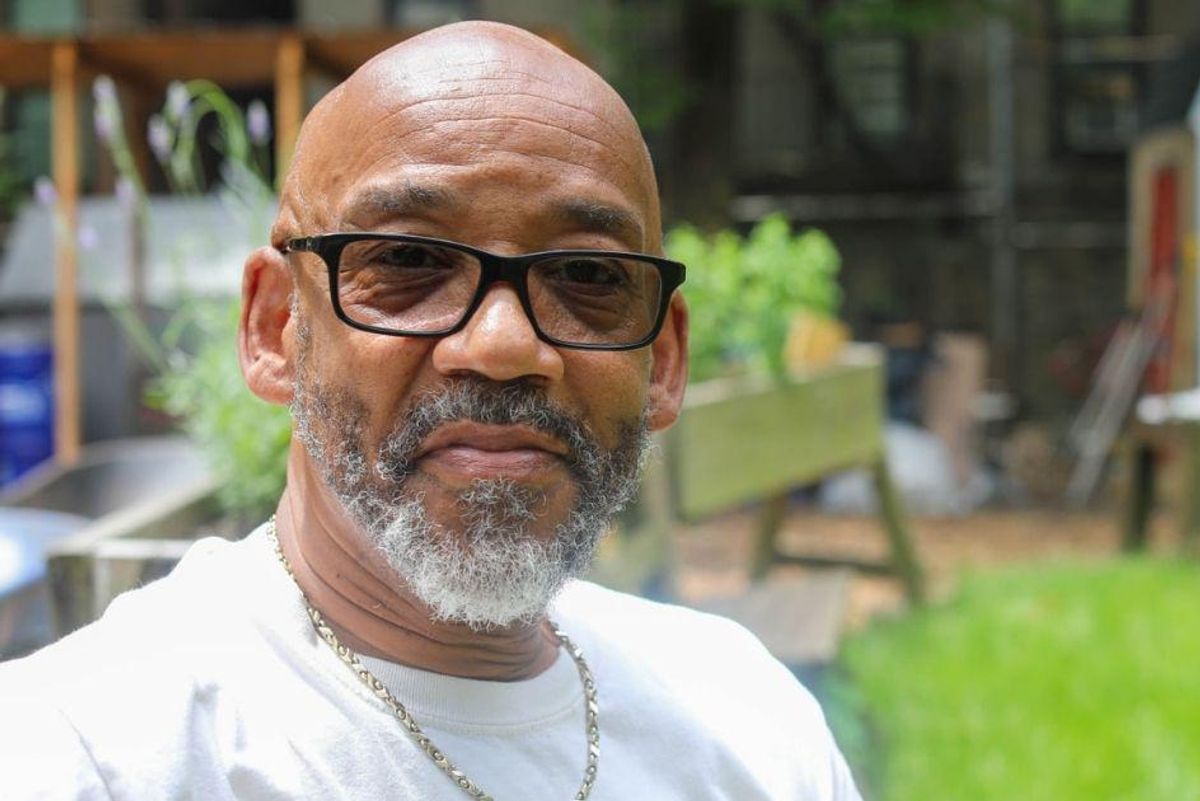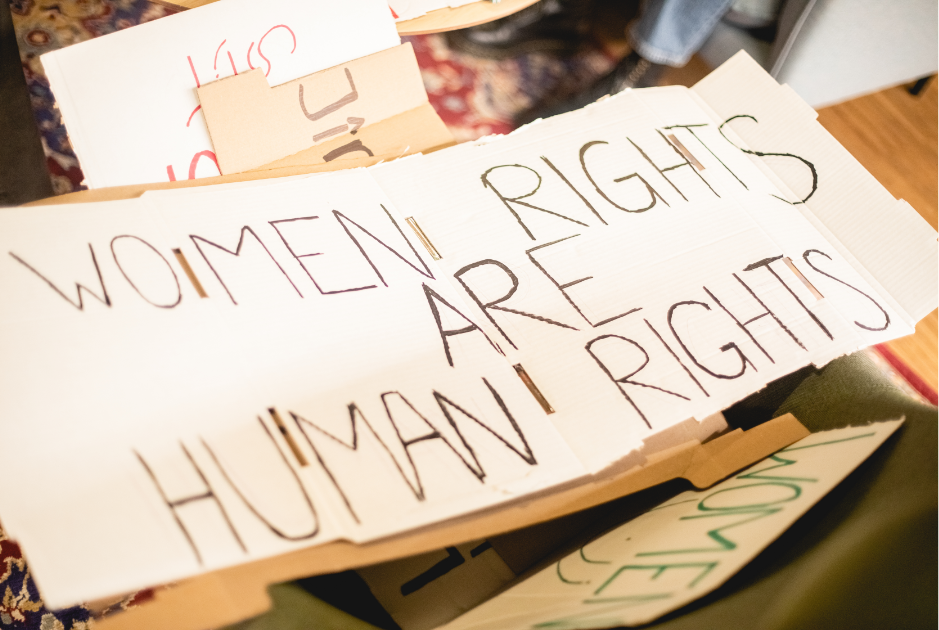
Tony Hillery was living the high life, running a limousine company and wearing Prada suits, when the financial crisis of 2008 hit. He lost his business and lines of credit and felt like he was too old to start over.
He kept reading about underfunded schools with no art, gym, or music—a sharp contrast to the private schools his kids had attended. So one day, he decided to take the subway to Harlem to see what he could do.
"I couldn't have been more arrogant," Hillery told Humans of New York. "I walked through the doors of the first elementary school I could find, asked for the principal, and said: 'I'm here to try to break the cycle of poverty.' She assigned me to the lunchroom, and that's where I started volunteering five days a week."
Hillery talked to the kids at lunch and they gravitated toward him. They called him "Mr. Tony" and treated him like Santa Claus. Their goofiness reminded him of his own kids.
"So when I learned that almost half of them were living in homeless shelters, that shit drove me crazy," he said. "It tore me up. I was looking for some way to help—anything."
He spotted an abandoned community garden across the street—the kids called it the 'haunted garden'—and decided to clean it up. He got the paperwork processed through the Parks Department and spent six weeks hauling out all the junk. He had no idea what he was going to do with the space other than clean it up.
"Then one morning a little girl tugged on my shoulder. A tiny little thing with glasses so big," he said. "Her name was Nevaeh. 'Heaven' spelled backwards. And she said: 'Mr. Tony, why don't we plant something?'"
Hillery didn't know anything about gardening, but a Google search showed him that it was hard to mess up growing herbs. So he got a dump truck of organic soil, some clearance herbs at Home Depot, and invited Nevaeh's kindergarten class to come and plant the first seedlings.
"There wasn't much structure in the beginning," he said. "A lot of times I'd just sit around with the kids and look at clouds. But over time the garden became a sort of outdoor science classroom. All of us were learning together. If something died, we'd just try a new spot. We learned about worms, and ladybugs, and praying mantises. Then we learned about food systems. I couldn't help but notice the diets of these kids: all sugar and processed food. Some of them couldn't name a single vegetable. But how could you blame them? There are 55 fast food restaurants in this community, but not a single supermarket."
Hillery and the kids started growing vegetables, and a handful of kids got really involved and invested in the garden, including Nevaeh. She came to everything Hillery planned—camps, nature walks—and though she was quiet and reserved at first, she started taking ownership of the garden.
"Those became her plants, not mine," he said. "Whenever volunteers came to help with composting-- Nevaeh would take the lead. And if you were doing it wrong, she'd grab that rake right out of your hands." That was 10 years ago. Since then, Hillery has expanded from one garden to 12 urban farms throughout Harlem and created an entire youth-oriented growing organization called Harlem Grown. Kids throughout the community help plant and tend the crops, learning science and agricultural lessons with hands-on experience. Since it started, Harlem Grown has given 6,000 pounds of organic produce to the community for free. Even Nevaeh's mom has gotten involved, serving as the Agricultural Director of the farms.
But Hillery explained to Humans of New York that the point of Harlem Grown is not just to grow food, but to grow healthy children.
"When you sit in this garden on a summer day—you hear things. There are fourteen homeless shelters within a four-block radius. So when it's hot outside, and the windows are open, you can hear the stress of poverty. Sometimes mothers will yell at these kids like they're grown men. They'll call them names. They'll tell them: 'you can't,' and 'you won't.' And after awhile the kids start to believe it.
When they first come into this garden— they're so freakin' happy. Especially the really young ones. But at the end of the day, they'll say: 'I'm going home.' And home means shelter. It's an epidemic, man. 115,000 kids in this city are living in shelters. It's a freakin' epidemic. But it's invisible. You'd never know these kids are homeless, because they're so happy.
But something happens around 9, 10, 11. I see it all the time. Those eyes dim, man. It's just life. There's too much stress around here. And they grow up fast. They lose that light. I just want to slow it down, that's all. I want them to have a safe place where they can just be them. That's all any of us want, right? To slow it all down so we can find out who we are?"
Hillery said he arrogantly went to Harlem thinking he had the answers, that he was going to fix kids. But in the past ten years, he's learned that they didn't need to be fixed or to become like him—they needed to stay like their young and happy selves. He was 52 pounds heavier and depressed before Harlem Grown, living a life that was all about things and money. The kids have taught him he was doing it all wrong.
And Neveah? She's sixteen now and an honor roll student.
"Recently she had a C in math," Hillery told Humans of New York, "so I said: 'Let's find you a private tutor, I'll pay for it.' But she wouldn't let me. She grabbed the rake out of my hand. She said: 'No Mr. Tony, I got this myself.' And she got a 93 on that final.
She was the tiniest little thing when I met her. With glasses so big. But even back then she had everything she needed. It just required a little protection. And a little time. She just needed some space to grow."
Well done, Mr. Tony, tending to the hearts and minds of the children of Harlem and helping them bloom.
Hear more from Hillery about Harlem Grown here:
Harlem Grownwww.youtube.com
- People are planting WWI-style victory gardens—even those of us ... ›
- Canadian IGA grocery store sells organic produce and honey from ... ›
- Indoor "smart garden" lets you grow your own organic food using ... ›





 What was I doing again?
What was I doing again? A space waitress at work.
A space waitress at work.  Waking Up Funeral GIF
Waking Up Funeral GIF Rihanna Nails GIF
Rihanna Nails GIF Yoga pants.Image via Canva.
Yoga pants.Image via Canva. Our natural lashes are nice just the way they are!
Our natural lashes are nice just the way they are! One step forward, many steps back. Image via Canva.
One step forward, many steps back. Image via Canva.  Homelessness is especially rampant on the West Coast.Image via Canva
Homelessness is especially rampant on the West Coast.Image via Canva